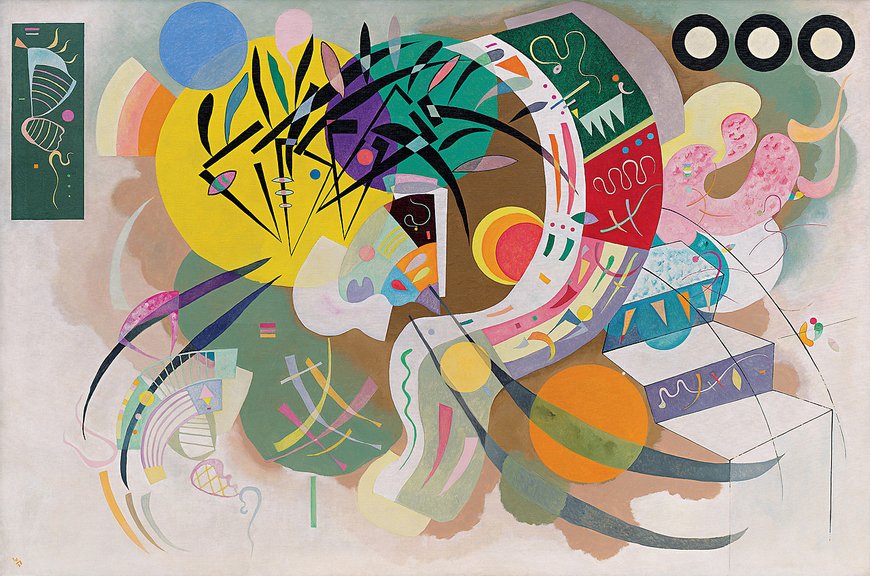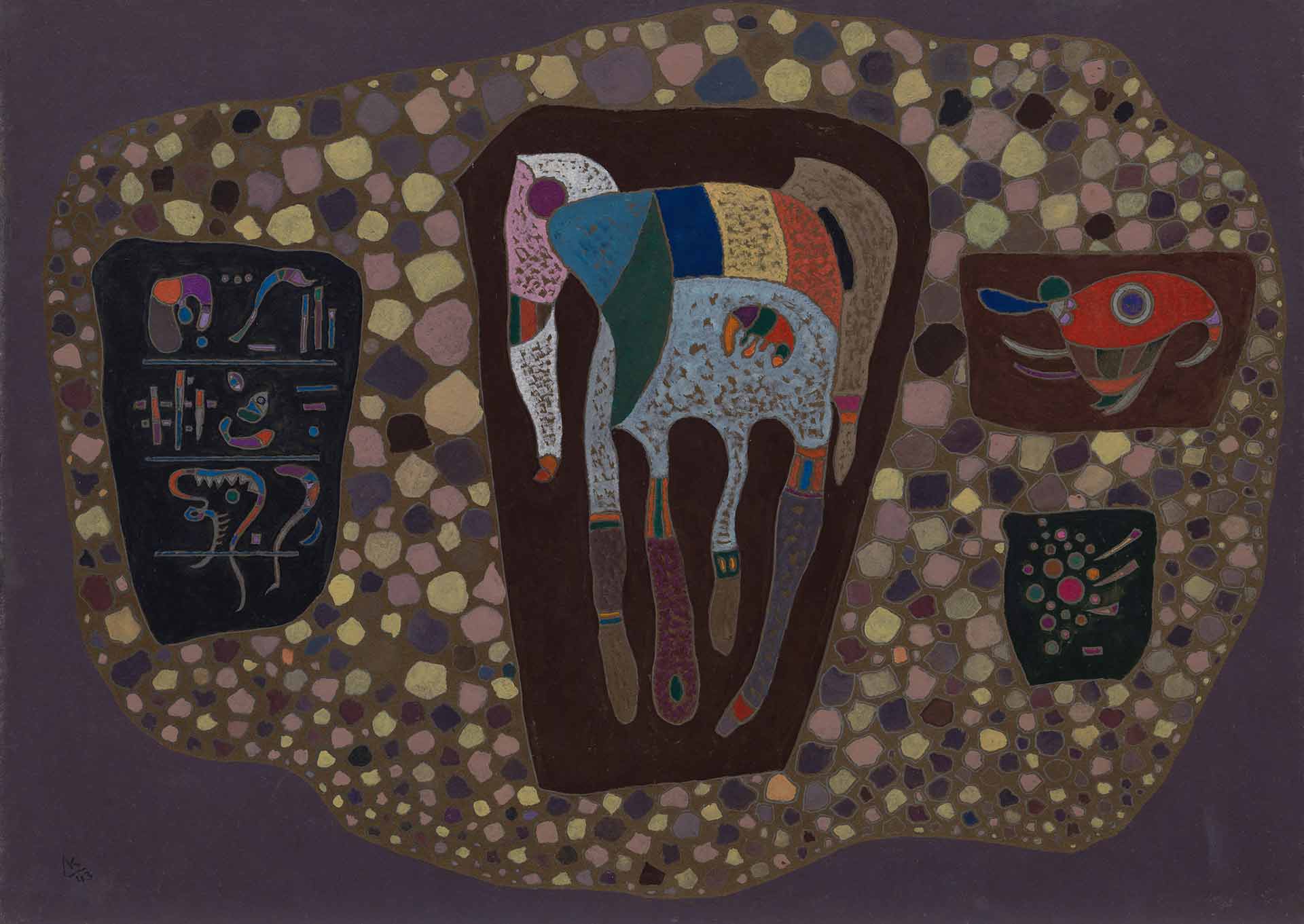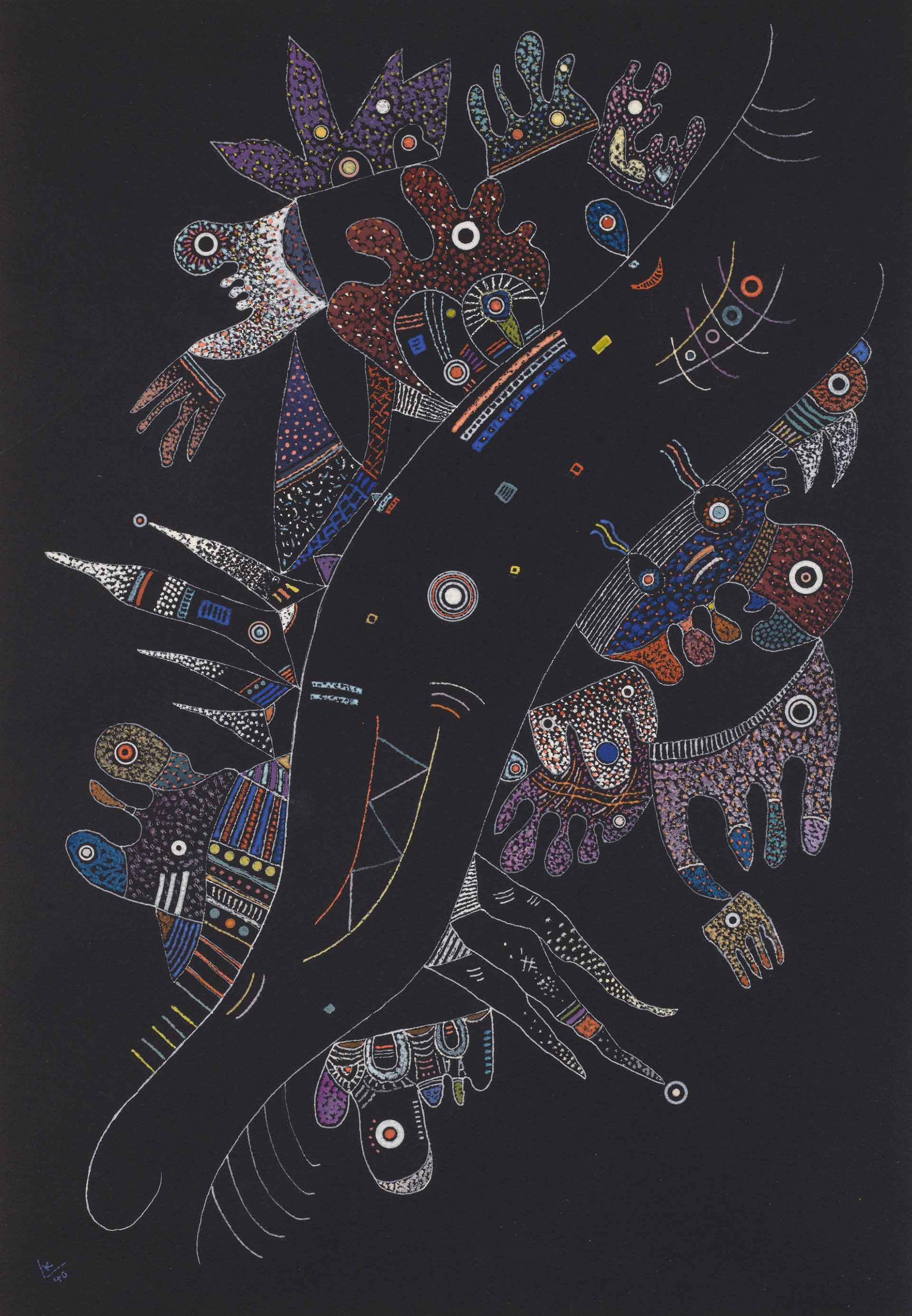Miniscule Worlds: Paris
Gallery 306
Vasily Kandinsky spent the last eleven years of his life in Neuilly-sur-Seine, a suburb of Paris. He came to France in December 1933 from Nazi Germany, following the close of the Berlin Bauhaus, where he had been a teacher. During this phase Kandinsky was highly creative despite political turmoil and, later, deprivation. The artist experimented with materials—for instance, combining sand with pigment—and his formal vocabulary featured a softer palette and biomorphic forms. Although Kandinsky had collected organic specimens and scientific encyclopedias while at the Bauhaus, he only introduced related imagery into his work in 1934.
His intricate compositions from this period resemble miniscule worlds of living organisms, clearly informed by his contact with Surrealism, including the art of Jean Arp and Joan Miró, and his interest in the natural sciences, particularly embryology, zoology, and botany. Kandinsky also came to favor pastel hues—pink, violet, turquoise, and gold—reminiscent of the colors of his Russian origins.
During World War II, German authorities confiscated the work of Kandinsky and other modernists, declaring it “degenerate,” and Stalinists in the Soviet Union closed museums, sending his paintings into storage. After 1942, restricted by a shortage of canvas, the artist produced smaller works on board or paper. Kandinsky died in 1944 at age seventy-eight, nevertheless leaving behind an expansive oeuvre.



